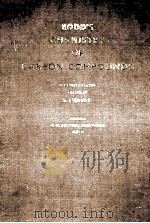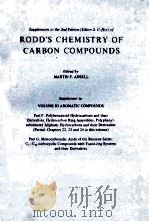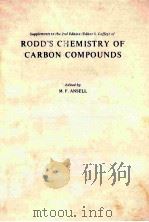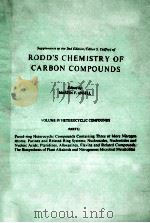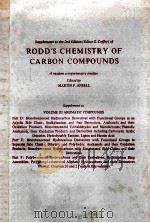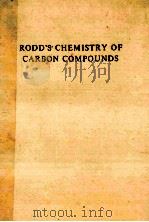《CHEMISTRY OF CARBON COMPOUNDS VOLUME IV PART A HETEROCYCLIC COMPOUNDS》
| 作者 | E.H. RODD 编者 |
|---|---|
| 出版 | ELSEVIER PUBLISHING COMPANY |
| 参考页数 | 807 |
| 出版时间 | 1957(求助前请核对) 目录预览 |
| ISBN号 | 无 — 求助条款 |
| PDF编号 | 813341978(仅供预览,未存储实际文件) |
| 求助格式 | 扫描PDF(若分多册发行,每次仅能受理1册) |
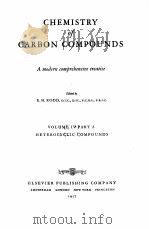
Chapter Ⅰ.Compounds with Three-and Four-Membered Heterocyclic Rings&by T.S.STEVENS10
1.Ethylene Oxides(Oxirans)11
2.Ethylene Sulphides(Thiirans)11
3.Ethyleneimines(Aziridines)14
4.Three Membered Rings with Two Hetero Atoms20
5.Trimethylene Oxides(Oxetans)20
6.Trimethylene Sulphides(Thietans)22
7.Trimethyleneimines(Azetidines)22
8.Other Four Membered Rings25
a.Silicon Compounds25
b.Rings Containing Two Oxygen or Sulphur Atoms25
c.Rings Containing Two Nitrogen Atoms26
d.Rings Containing One Nitrogen and One Oxygen or Sulphur Atom27
Chapter Ⅱ.Compounds Containing a Five Membered Ring with One Hetero Atom,Nitrogen&by T.S.STEVENS28
1.Pyrroles and Hydropyrroles28
Synthetic Methods28
General Properties34
a.Pyrrole and its Substitution Products40
(ⅰ)Pyrrole40
N-Derivatives of Pyrrole41
(ⅱ)C-Alkyl-and C-Aryl-pyrroles43
(ⅲ)Halogenopyrroles45
(ⅳ)Nitro-,Nitroso-and Amino-pyrroles47
(ⅴ)Hydroxypyrroles49
(ⅵ)Sulphur Derivatives of Pyrroles51
(ⅶ)Alcohols and Related Compounds51
(ⅷ)Aldehydes and Ketones52
(ⅸ)Carboxylic Acids55
b.Dihydropyrroles(Pyrrolines)59
c.Tetrahydropyrroles(Pyrrolidines)61
d.Compounds Having Two or More Unfused Pyrrole Rings68
2.Indoles and Hydroindoles71
Synthetic Methods71
General Properties and Reactions77
a.Indole and its Substitution Products81
(ⅰ)Indole81
N-Derivatives81
(ⅱ)C-Alkyl-,C-Aryl-and Related Indoles82
(ⅲ)Halogenoindoles85
(ⅳ)Sulphur Compounds85
(ⅴ)Nitro-,Amino-and Related Indoles86
(ⅵ)Hydroxyindoles87
(ⅶ)Metal and Metalloid Derivatives91
(ⅷ)Indolyl Carbinols and Related Amines92
Aminoalkylindoles92
(ⅸ)Aldehydes and Ketones95
(ⅹ)Carboxylic Acids96
b.Dihydroindoles(Indolines)100
Oxoindolines(Indolinones)102
c.Tetra-,Hexa-and Octa-Hydroindoles109
d.Compounds Having More than One Indole Nucleus109
3.isoIndoles and isoIndolines112
4.Other Bicyclic Pyrrole Systems115
a.Spirocyclic Systems115
b.Cycloalkenopyrroles116
c.Fused Systems of Two Heterocyclic Rings117
5.Benzoindoles(Except Carbazole)119
6.Carbazole120
Synthetic Methods121
General Properties and Reactions122
(ⅰ)Carbazole and its N-Substituted Derivatives123
(ⅱ)C-Alkylcarbazoles125
(ⅲ)Halogenocarbazoles125
(ⅳ)Nitro-and Amino-carbazoles125
(ⅴ)Hydroxycarbazoles127
(ⅵ)Sulphonic Acids and Related Compounds128
(ⅶ)Organometallic Derivatives128
(ⅷ)Alcohols,Aldehydes and Ketones128
(ⅸ)Carboxylic Acids129
(ⅹ)Tetrahydro-carbazoles130
(ⅹⅰ)Other Reduced Carbazoles133
(ⅹⅱ)Compounds Having More Than One Carbazole Nucleus134
(ⅹⅲ)Benzocarbazoles134
7.Other Tricyclic Pyrrole Systems136
Chapter Ⅲ.Compounds Containing a Five Membered Ring with One Hetero Atom,Oxygen or Sulphur&by T.S.STEVENS138
The Furan Group138
1.Monocyclic Furans and Hydrofurans138
a.Furan and its Substitution Products138
Synthetic Methods138
General Properties and Reactions141
Ring Fission143
(ⅰ)Furan144
(ⅱ)Alkyl-and Aryl-furans146
(ⅲ)Halogenofurans147
(ⅳ)Sulphonic Acids148
(ⅴ)Nitrofurans148
(ⅵ)Aminofurans149
(ⅶ)Hydroxyfurans149
(ⅷ)Furfuryl Alcohol and Related Compounds151
(ⅸ)Aldehydes and Ketones152
(ⅹ)Carboxylic Acids155
b.Dihydrofurans159
c.Tetrahydrofurans162
d.Compounds with Two or More Unfused Furan Nuclei166
e.Polyene Derivatives of Furan167
2.2:3(4:5)-Benzofuran(Coumarone)and its Hydrogenated Products168
Synthetic Methods169
General Properties and Reactions171
a.Benzofuran and its Substitution Products172
(ⅰ)Benzofuran172
(ⅱ)Alkyl-and Aryl-benzofurans173
(ⅲ)Halogeno-benzofurans173
(ⅳ)Nitro-and Amino-benzofurans174
(ⅴ)Hydroxy-benzofurans175
(ⅵ)Alcohols,Aldehydes and Ketones175
(ⅶ)Carb-oxylic Acids178
b.2:3-Dihydrobenzofurans(Coumarans)179
c.Other Reduced Benzofurans185
3.3:4-Benzofuran(isoBenzofuran)186
4.Other Bicyclic Systems with a Furan Ring190
5.Dibenzofuran or Diphenylene Oxide and its Hydrogenated Products192
Synthetic Methods192
Properties and Reactions193
a.Dibenzofuran and Derivatives195
b.Reduced Dibenzofurans195
c.Natural Products Related to Dibenzofuran197
6.Other Tri-and Poly-cyclic Systems with a Furan Ring199
a.Condensed Systems of Benzene Rings with One Furan Nucleus199
b.Systems of Benzene Rings and More Than One Furan Nucleus201
c.Other Tri-and Poly-cyclic Furans202
The Thiophen Group203
7.Monocyclic Thiophens and Hydrothiophens203
a.Thiophen and its Substitution Products203
Synthetic Methods203
General Properties205
(ⅰ)Thiophen207
Metal and Metalloid Derivatives of Thiophens208
(ⅱ)Alkyl-and Aryl-thiophens210
(ⅲ)Halogenothiophens212
(ⅳ)Nitro-and Amino-thiophens214
(ⅴ)Hydroxythiophens215
(ⅵ)Sulphonic Acids,Mercaptans and Related Compounds216
(ⅶ)Thiophen Alcohols and Related Compounds216
(ⅷ)Aldehydes and Ketones217
(ⅸ)Thiophencarboxylic Acids219
Acids Having the Carboxyl Group in the Side-Chain220
b.Dihydrothiophens221
c.Tetrahydrothiophens222
d.Compounds Having Two or More Unfused Thiophen Rings224
8.Thionaphthens225
Synthetic Methods225
General Properties228
a.Thionaphthen and its Substitution Products229
b.Reduced Thionaphthens232
9.Other Bicyclic Thiophens235
a.3:4-Benzothiophens(isoBenzothiophens)235
b.Other Cycloalkenothiophens236
c.Systems of Two Fused Thiophen Rings237
10.Dibenzothiophens238
11.Other Tri-and Poly-cyclic Systems Containing the Thiophen Ring240
12.Selenophens and Tellurophens242
Chapter Ⅳ.Compounds Containing a Five Membered Ring with Two Hetero Atoms:Pyrazole and Iminazole Groups&by J.D.LOUDON244
Nomenclature244
1.Pyrazole Group245
a.Pyrazoles245
Syntheses245
Properties249
(ⅰ)Halogeno-,Nitroso-,Nitro-and Sulphonic Derivatives253
(ⅱ)Amino-and Azo-pyrazoles254
(ⅲ)Hydroxypyrazoles255
(ⅳ)Alcohols,Aldehy-des,Ketones257
(ⅴ)Carboxylic Acids258
(ⅵ)Pyrazolenines260
b.Pyrazolines261
Syntheses261
Properties263
(ⅰ)Alkyl-and Aryl-pyrazolines264
(ⅱ)Substituted Pyrazolines265
(ⅲ)Pyrazolones268
c.Pyrazolidines276
d.Indazoles or Benzopyrazoles278
Synthetic Methods of Formation279
Properties281
(ⅰ)Halogeno-,Nitro-and Amino-indazoles282
(ⅱ)Ketones and Car-boxylic Acids284
(ⅲ)Reduced indazoles284
e.Condensed Polycyclic Pyrazoles285
2.Iminazole Group286
Syntheses286
Properties290
a.Iminazole,its Homologues and Derivatives292
(ⅰ)Halogeno-,Nitro-and Amino-iminazoles294
(ⅱ)Sulphur-Containing Derivatives295
(ⅲ)Alcohols and Related Compounds296
(ⅳ)Alde-hydes and Ketones298
(ⅴ)Iminazole Carboxylic Acids298
b.Iminazolines301
(ⅰ)2-Iminazolines301
(ⅱ)2:5-Dihydroiminazoles or 3-Iminazolines306
(ⅲ)2:3-Dihydroiminazoles or 4-Iminazolines306
c.Iminazolidines308
(ⅰ)Ketoiminazolidines309
(ⅱ)Diketoiminazolidines312
(ⅲ)Triketo-iminazolidines320
d.Benziminazoles321
Methods of Synthesis322
Properties325
Benziminazole,its Homo-logues and Substitution Products326
(ⅰ)Halogeno-,Nitro-,Sulpho-and Amino-Derivatives327
(ⅱ)Alcohols etc.,Aldehydes and Ketones328
(ⅲ)Carboxylic Acids329
(ⅳ)Reduced Benziminazoles329
e.Condensed Polycyclic Iminazoles331
Chapter Ⅴ.Compounds Containing a Five Membered Ring with Two Hetero Atoms:Dioxole and Oxazole Groups and Their Thia Analogues&by J.D.LOUDON332
1.Compounds Containing a Five Membered Ring with Oxygen and/or Sulphur as the Two Hetero Atoms332
2.isoOxazole Group334
a.isoOxazole,its Homologues and Substitution Products334
Syntheses334
Properties336
(ⅰ)Halogeno-,Nitro-and Sulphonic Derivatives338
(ⅱ)Amino Deriva-tives339
(ⅲ)Alcohols etc.,Aldehydes and Ketones340
(ⅳ)isoOxazole Carboxylic Acids341
b.isoOxazolines and Their Derivatives343
Synthetic Methods343
(ⅰ)isoOxazolines344
(ⅱ)isoOxazolones345
c.isoOxazolidines348
d.Benzisooxazoles and Related Compounds348
(ⅰ)Benzisooxazoles(Indoxazenes)349
(ⅱ)Anthranils351
3.Oxazole Group353
a.Oxazole,its Homologues etc353
Syntheses353
Properties357
Aldehydes,Ketones and Carboxylic Acids359
b.Oxazolines361
(ⅰ)4:5-Dihydrooxazoles or 2-Oxazolines361
Syntheses361
4-Oxazolones(4-Keto-2-Oxazolines)365
5-Oxazolones(5-Keto-2-oxazolines)365
(ⅱ)2:5-Dihydrooxazoles or 3-Oxazolines370
(ⅲ)2:3-Dihydrooxazoles or 4-Oxazolines371
c.Oxazolidines372
d.Benzoxazoles and Condensed Polycyclic Oxazoles375
4.isoThiazole Group379
a.Benzisothiazoles380
b.Benzisoselenazoles385
5.Thiazole Group385
a.Thiazoles385
Syntheses386
Properties388
(ⅰ)Halogeno-,Nitro-and Sulpho-thiazoles391
(ⅱ)Amino-and Hydroxy-thiazoles392
(ⅲ)Alcohols and Related Compounds397
(ⅳ)Thiazole Aldehydes and Ketones399
(ⅴ)Thiazole Carboxylic Acids400
b.Thiazolines403
(ⅰ)4:5-Dihydrothiazoles(2-Thiazolines)403
(ⅱ)2:5-Dihydrothiazoles(3-Thiazolines)407
(ⅲ)2:3-Dihydrothiazoles(4-Thiazolines)407
c.Thiazolidines407
d.The Penicillins414
Structure of Degradation Products417
Penicillamine,Penilloaldehydes,Penaldic and Penicilloic Acids417
Penilloic Acids419
Penillic Acids,Penillamines and isoPenillic Acids419
Penicillenates421
Benzyl-penillonic Acid421
Structure of Penicillin423
e.Benzothiazoles425
Syntheses425
Properties426
(ⅰ)Halogeno-,Nitro-and Sulpho-benzothiazoles428
(ⅱ)Amino-and Hydroxy-benzothiazoles429
(ⅲ)Aldehydes,Ketones and Carboxylic Acids433
(ⅳ)Reduced Benzothiazoles433
(ⅴ)Condensed Polycyclic Thiazoles435
f.Selenazoles435
Chapter Ⅵ.Compounds Containing a Five Membered Ring with More Than Two Hetero Atoms&by E.HOGGARTH439
Five Membered Rings with Three Hetero Atoms439
1.Triazoles439
a.1:2:3-Triazoles439
Methods of Preparation439
Properties443
Structure of 1:2:3-Triazoles444
(ⅰ)Halogen Derivatives of 1:2:3-Triazole445
(ⅱ)C-Hydroxy-1:2:3-Triazoles445
(ⅲ)C-Amino-1:2:3-triazoles446
(ⅳ)1:2:3-Triazole Aldehydes447
(ⅴ)1:2:3-Triazolecarboxylic Acids448
b.Benzotriazoles449
Methods of Preparation449
Properties450
Structure of the Benzo-triazoles451
c.1:2:4-Triazoles452
Methods of Preparation452
Properties458
Structure of 1:2:4-Triazoles458
(ⅰ)Halogen Derivatives of 1:2:4-Triazole460
(ⅱ)Hydroxy-and Amino-Derivatives of 1:2:4-Triazole460
(ⅲ)1:2:4-Triazolecarboxylic Acids463
2.Oxadiazoles464
a.1:2:3-Oxadiazoles464
b.1:2:5-Oxadiazoles(Furazans)466
c.Benzo-1:2:5-oxadiazoles469
d.1:2:4-Oxadiazoles(Azoximes)469
e.1:3:4-Oxadiazoles471
3.Thiadiazoles473
a.1:2:3-Thiadiazoles(Diazosulphides)473
b.Benzo-1:2:3-thiadiazoles474
c.1:2:5-Thiadiazoles474
d.1:2:4-Thiadiazoles(Azosulphimes)475
e.1:3:4-Thiadiazoles476
4.Dioxazoles,Dithiazoles and Oxathiazoles479
Five Membered Rings with Four Hetero Atoms481
5.Tetrazoles481
6.Thiatriazoles and Dithiadiazoles486
Chapter Ⅶ.Compounds Containing a Six Membered Ring with One Hetero Atom,Nitrogen&by N.CAMPBELL488
1.Pyridine and its Derivatives488
Structure of Pyridine489
Fine Structure of the Pyridine Molecule490
Methods of Synthesis492
Separation,Purification and Identification of Pyridine Bases499
Properties and Reactions of the Pyridine Bases;Comparison with Benzene and Nitrobenzene500
Reactions with Metal Compounds501
Diene Addition501
Pyridinium Compounds504
Pyridinium Betaines507
Properties of the Pyridinium Betaines509
Pyridinium Salts and Betaines as Synthetic Reagents510
Fission of the Pyridine Ring512
a.Pyridine,its Homologues and Substitution Products514
(ⅰ)Pyridine514
Pyridine-N-Oxides516
(ⅱ)Pyridine Homologues518
Reactivity of the 2-and 4-Picolines519
(ⅲ)Phenylpyridines526
(ⅳ)Pyridone Methides528
(ⅴ)Halogenopyridines530
(ⅵ)Nitro-pyridines536
(ⅶ)Pyridinesulphouic Acids537
(ⅷ)Aminopyridines538
Properties and Structure539
Azopyridines and Related Com-pounds542
(ⅸ)Hydroxypyridines544
(ⅹ)Pyridthiols or Pyrid-thiones548
(ⅹⅰ)Alcohols of the Pyridine Series549
Vitamin B6551
(ⅹⅱ)Pyridine Aldehydes552
(ⅹⅲ)Pyridine Ketones554
(ⅹⅳ)Pyridine-carboxylic Acids556
Pyridine Polycarboxylic Acids562
(ⅹⅴ)Pyridine Arsenicals564
(ⅹⅵ)Dipyridyls564
b.Dihydropyridines566
c.Tetrahydropyridines.Piperideines567
d.Hexahydropyridine.Piperidine569
(ⅰ)Piperidine and its Homologues570
(ⅱ)N-Alkyl-and N-Aryl-Piper-idines572
Fission of the Piperidine Ring574
(ⅲ)Piperidine Deriva-tives576
(ⅳ)Hydrogenated Pyridinecarboxylic Acids578
(ⅴ)Piper-idones581
e.Dipiperidyls583
2.Quinoline and its Derivatives584
Structure of Quinoline585
Fine Structure of Quinoline586
Methods of Synthesis586
Separation,Purification and Identification of the Quinoline Bases594
Properties of the Quinoline Bases.Comparison with Naphthalene594
Quinolinium Compounds597
Ring-Fission601
a.Quinoline,its Homologues and Substitution Products602
(ⅰ)Quinoline602
(ⅱ)Quinoline Homologues603
(ⅲ)Phenylquinolines604
(ⅳ)Quinolone Methides604
(ⅴ)Halogenoquinolines607
(ⅵ)Nitroquinolines610
(ⅶ)Quinolinesulphonic Acids612
(ⅷ)Amino-quinolines and Related Compounds613
Properties614
Amino-quinoline Derivatives as Chemotherapeutic Drugs617
Quiuolylhydra-zines and Related Compounds618
(ⅸ)Hydroxyquinolines or Quino-linols620
Aminohydroxyquinolines626
Quinoline Quinones627
(ⅹ)Quinolinethiols627
(ⅹⅰ)Quinoline-aldehydes628
(ⅹⅱ)Quinolyl Ketones630
(ⅹⅲ)Quinolinecarboxylic Acids631
(ⅹⅳ)Hydroxy-quinolinecarboxylic Acids635
(ⅹⅴ)Diquinolyls637
(ⅹⅵ)Quinoline Dyes637
Quinophthalones638
Dyes Derived from Naphtho-[2′:3′-5:6]-quinoline640
b.Hydrogenated Quinolines641
3.isoQuinoline and its Derivatives645
Constitution645
Synthetic Methods646
Fission of the isoQuinoline Ring649
General Properties651
isoQuinolinium Compounds653
a.isoQuinoline and its Substitution Products654
(ⅰ)isoQuinoline,its Alkyl and Aryl Derivatives654
(ⅱ)Halogenoiso-quinolines656
(ⅲ)Nitration and Sulphonation of iso Quinoline657
(ⅳ)Aminoisoquinolines658
(ⅴ)Hydroxyisoquinolines or iso Quinolinols659
(ⅵ)iso Quinoline-aldehydes and Ketones660
(ⅶ)iso Quinoline-carboxylic Acids662
(ⅷ)Diisoquinolyls663
b.Hydrogenated iso Quinolines663
4.Cyclopolymethylenepyridines666
5.Acridine and its Derivatives667
Synthetic Methods668
Acridinium Compounds671
a.Acridine and its Substitution Products673
(ⅰ)Acridine and Homologues673
(ⅱ)Halogenoacridines674
(ⅲ)Nitroacridines676
(ⅳ)Aminoacridines677
Acridine Compounds of Therapeutic Importance679
Acridine Dyes681
(ⅴ)Hydroxyacridines or Acridols684
Acridone and its Derivatives685
(ⅵ)Diacridyl Com-pounds688
b.Hydrogenated Acridines689
6.Phenanthridine and its Derivatives691
Methods of Synthesis692
a.Phenanthridine and its Substitution Products694
(ⅰ)Phenanthridine and its Homologues694
(ⅱ)Halogeno-,Nitro-and Amino-phenanthridines695
(ⅲ)Phenanthridinium Compounds697
(ⅳ)Hydroxyphenanthridines.Phenanthridones698
b.Hydrophenanthridines701
7.Benzoquinolines702
8.Benzoisoquinolines705
9.Naphthoquinolines and Naphthoisoquinolines706
a.Benzacridines(Naphthacridines)709
b.Dibenzacridines710
c.Benzophenanthridines712
INDEX715
1957《CHEMISTRY OF CARBON COMPOUNDS VOLUME IV PART A HETEROCYCLIC COMPOUNDS》由于是年代较久的资料都绝版了,几乎不可能购买到实物。如果大家为了学习确实需要,可向博主求助其电子版PDF文件(由E.H. RODD 1957 ELSEVIER PUBLISHING COMPANY 出版的版本) 。对合法合规的求助,我会当即受理并将下载地址发送给你。
高度相关资料
-
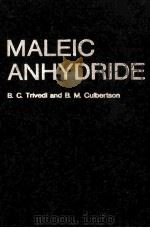
- MALEIC ANHYDRIDE
- 1982 PLENUM PRESS
-
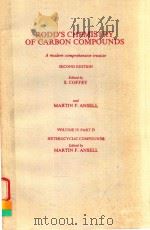
- RODD'S CHEMISTRY OF CARBON COMPOUNDS A MODERN COMPREHENSIVE TREATISE VOLUME IV PART D SECOND ED
- 1986 ELSEVIER
-
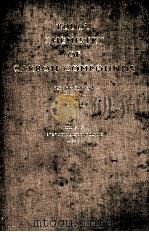
- RODD‘S CHEMISTRY OF CARBON COMPOUNDS SECOND EDITION VOLUME IV PART G
- 1978 ELSEVIER SCIENTIFIC PUBLISHING COMPANY
-
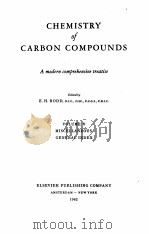
- CHEMISTRY OF CARBON COMPOUNDS VOLUME V
- 1962 ELSEVIER PUBLISHING COMPANY
-
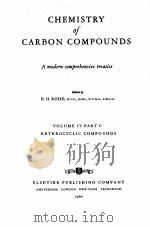
- CHEMISTRY OF CARBON COMPOUNDS VOLUME IV PART C HETEROCYCLIC COMPOUNDS
- 1960 ELSEVIER PUBLISHING COMPANY
-
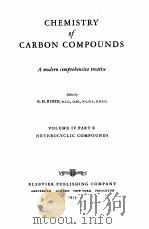
- CHEMISTRY OF CARBON COMPOUNDS VOLUME IV PART B HETEROCYCLIC COMPOUNDS
- 1959 ELSEVIER PUBLISHING COMPANY
-

- CHEMISTRY OF CARBON COMPOUNDS VOLUME III PART A AROMATIC COMPOUNDS
- 1954 ELSEVIER PUBLISHING COMPANY
-
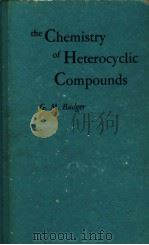
- THE CHEMISTRY OF HETEROCYCLIC COMPOUNDS
- 1961 ACADEMIC PRESS
-
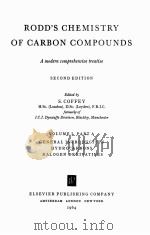
- ROSS'S CHEMISTRY OF CARBON COMPOUNDS VOLUME I PART A
- 1964 ELSEVIER
提示:百度云已更名为百度网盘(百度盘),天翼云盘、微盘下载地址……暂未提供。➥ PDF文字可复制化或转WORD
